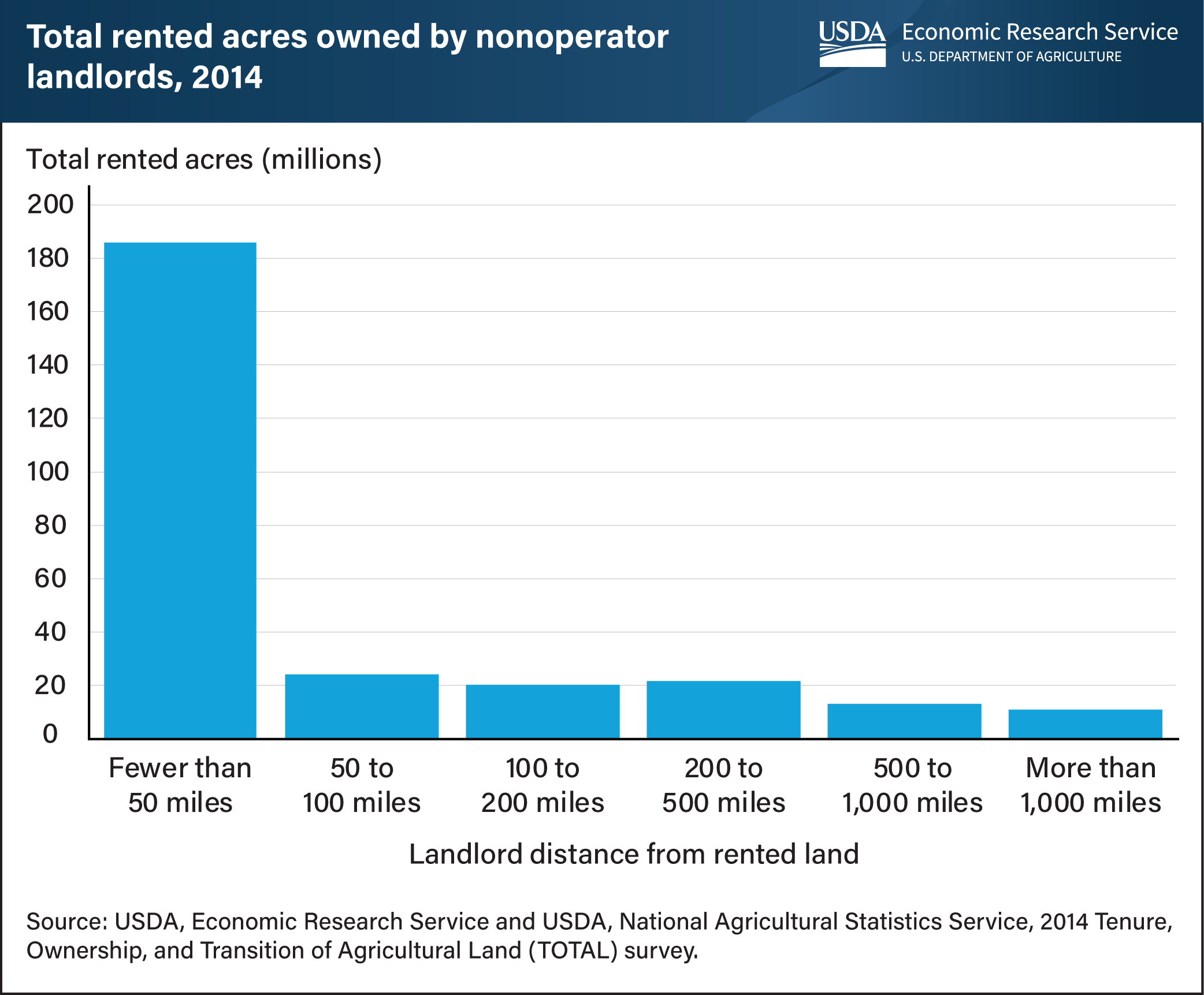Nonoperator landlords residing within 50 miles of their land owned 67 percent of rented acreage in 2014
- by Scott Callahan
- 3/29/2021

Errata On April 1, 2021, the title was revised to include nonoperator landlords. The text citing total rented farmland acreage owned by those residing within 200 miles of their farmland was corrected to 83 percent. No other data were affected.
In 2014, 39 percent of farmland acreage in the 48 contiguous States was rented. Of this share, 80 percent was owned by landlords who did not operate the farms. ERS researchers examined the data obtained from the 2014 Tenure, Ownership, and Transition of Agricultural Land (TOTAL) survey to study the characteristics of nonoperator landlords and their tenants in the 25 most important agricultural States by cash receipts. The study found that nonoperator landlords residing within 50 miles of their land owned the majority (67 percent) of rented farmland acreage in 2014. Eighty-three percent of total rented farmland acreage is owned by those who lived 200 miles or less from their farmland. Total rented acres progressively declined as the distance between landlords and tenants increased. Those living more than 1,000 miles away, for example, owned only 4 percent of total rented farmland acreage. While some nonoperator landlords lived in major U.S. coastal cities, most lived in major cities in agricultural States. Nonoperator landlords were also more likely to be retired farm operators or descendants who inherited agricultural land, rather than investors from more distant parts of the country. Nonoperator landlords who lived farther away from their rented land tended to have larger holdings than those who lived nearby. This chart appears in the Economic Research Service report Absent Landlords in Agriculture – A Statistical Analysis, released March 2021.
We’d welcome your feedback!
Would you be willing to answer a few quick questions about your experience?

